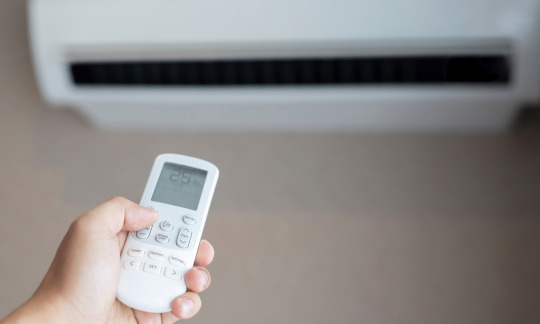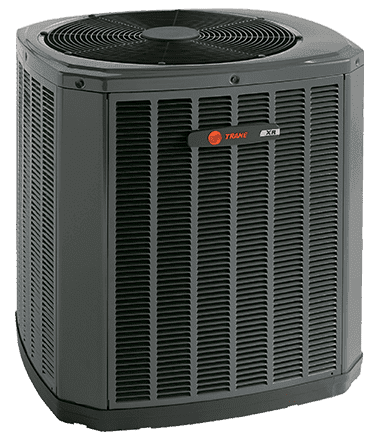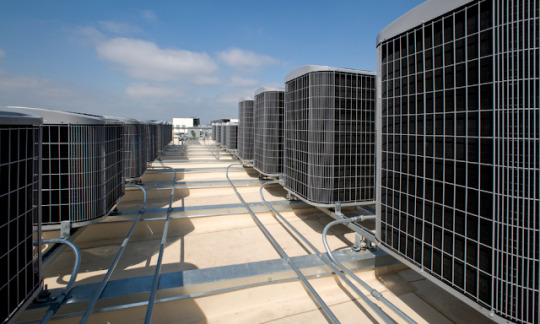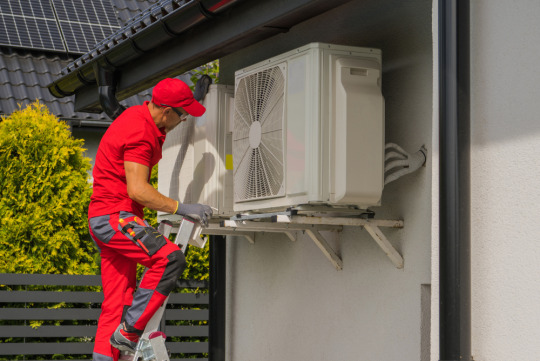Don't wanna be here? Send us removal request.
Text
Smart Thermostats: Enhancing Home Comfort
In today’s fast-paced world, homeowners are constantly looking for ways to increase comfort, save energy, and make their living spaces more efficient. One of the most effective and innovative solutions to emerge in recent years is the smart thermostat. This cutting-edge device goes beyond traditional temperature control by offering automated, responsive, and energy-efficient climate management, truly enhancing home comfort in a modern, intelligent way.

What is a Smart Thermostat?
A smart thermostat is a digital device that allows users to control their home’s heating and cooling systems remotely through a smartphone, tablet, or voice assistant. Unlike standard programmable thermostats, smart versions learn from your behaviors, detect occupancy, and adjust settings to maximize comfort and efficiency.
Key Features of Smart Thermostats
Wi-Fi Connectivity: Enables remote access and control from anywhere.
Learning Capabilities: Adapts to your schedule and preferences.
Geofencing: Adjusts settings based on your location.
Integration with Smart Home Systems: Works with Alexa, Google Assistant, Apple HomeKit, etc.
Energy Usage Reports: Provides insights into heating/cooling habits.
Benefits of Smart Thermostats
Smart thermostats do more than just adjust the temperature—they revolutionize how we interact with our living environments.
1. Energy Efficiency and Cost Savings
Smart thermostats optimize your HVAC system’s operation, reducing energy consumption. According to the EPA’s ENERGY STAR program, using a smart thermostat can save homeowners about 10–12% on heating and 15% on cooling annually. That can add up to substantial savings over time.
2. Convenience and Remote Access
One of the biggest advantages is the ability to control the temperature from your phone, no matter where you are. Whether you're at work or on vacation, you can monitor and adjust your home’s climate to ensure it’s always comfortable when you return.
3. Personalized Comfort
Smart thermostats learn your schedule and preferences. They automatically adjust the temperature based on when you’re home or away, providing comfort when you need it most without unnecessary energy use.
4. Environmental Benefits
Reducing energy usage not only lowers utility bills but also decreases your carbon footprint. Smart thermostats play a crucial role in creating eco-friendly homes.
How Smart Thermostats Work
Understanding how smart thermostats operate helps homeowners appreciate their true value.
Sensors and Connectivity
Smart thermostats use a combination of motion sensors, humidity detectors, and weather forecasts to maintain an ideal indoor climate. They connect via Wi-Fi and communicate with other smart devices to ensure seamless operation.
Machine Learning Algorithms
Over time, these devices "learn" from your daily routines. For example, if you consistently lower the temperature before bed, the thermostat will begin to do this automatically.
Integration with Other Smart Devices
Smart thermostats work alongside other smart devices such as lights, window sensors, and smart blinds. This interconnected environment ensures maximum comfort and efficiency with minimal user input.
Top Smart Thermostat Brands
When considering upgrading to a smart thermostat, it’s important to choose a reputable brand.
Nest Thermostat (by Google)
Offers advanced learning features
Excellent integration with Google Assistant
Sleek and modern design
Ecobee SmartThermostat
Comes with room sensors for better climate control
Supports Amazon Alexa voice commands
Provides detailed energy reports
Honeywell Home T9
Highly customizable settings
Works with Alexa and Google Assistant
Geofencing and scheduling features
Installation and Setup
Most smart thermostats are easy to install and come with step-by-step guides. However, if you're not comfortable working with wiring, it's best to hire a professional.
DIY Installation
Shut off power to your HVAC system
Remove the old thermostat
Connect the smart thermostat using labeled wires
Restore power and follow on-screen setup instructions
Professional Installation
For homes with complex HVAC systems, hiring a certified technician ensures the job is done correctly and safely.
Smart Thermostats and Home Automation
Integrating a smart thermostat into a broader home automation system can elevate your living experience to the next level.
Creating Smart Scenes
You can create routines or “scenes” like:
“Good Morning”: Lights turn on, temperature adjusts to a comfortable level, and coffee starts brewing.
“Away Mode”: Thermostat adjusts to energy-saving mode, lights turn off, and doors lock.
Voice Control Capabilities
Using smart assistants like Alexa or Google Home, you can change your home’s temperature with a simple voice command, making comfort more accessible than ever.
Common Concerns and Misconceptions
Despite their advantages, some homeowners hesitate to switch to smart thermostats due to common concerns.
Are They Hard to Use?
Modern smart thermostats have intuitive touchscreens and mobile apps that make navigation simple, even for non-tech-savvy users.
What If My Wi-Fi Goes Down?
Smart thermostats continue to function manually if the internet is down. You won’t lose climate control—you just won’t be able to access remote features.
Do They Really Save Money?
Numerous studies and user testimonials confirm that smart thermostats result in noticeable energy savings. While the initial investment may seem high, the long-term savings often justify the cost.
Future Trends in Smart Thermostat Technology
The smart home industry continues to evolve rapidly, and smart thermostats are no exception.
AI and Predictive Analysis
Future thermostats will use AI to anticipate your needs even more accurately, adjusting based on habits, preferences, and real-time data.
Integration with Renewable Energy
Some smart thermostats are being designed to sync with solar power systems and smart grids, allowing homeowners to optimize energy use based on availability and cost.
Advanced Air Quality Monitoring
Next-gen devices may come with built-in air quality sensors to not only adjust temperature but also improve the health and safety of your home environment.
Choosing the Right Smart Thermostat
Before purchasing, consider the following:
Compatibility
Ensure the smart thermostat is compatible with your HVAC system. Some systems require additional components like a C-wire or adapter.
Features
Choose a model that aligns with your needs. For example, if your house has hot or cold spots, go for a thermostat with remote room sensors.
Budget
While high-end models offer more features, there are also budget-friendly options that provide excellent functionality.
Conclusion
Smart thermostats represent a powerful step forward in enhancing home comfort, improving energy efficiency, and aligning with sustainable living goals. Their ability to learn, adapt, and integrate into broader smart home systems makes them a must-have for any modern homeowner. As the technology continues to advance, the comfort, convenience, and savings they provide will only grow.
If you’re looking to upgrade your home and take greater control over your indoor environment, investing in a smart thermostat is one of the smartest decisions you can make.
0 notes
Text
DIY vs. Professional HVAC Repair: What You Need to Know
Heating, ventilation, and air conditioning (HVAC) systems are crucial for maintaining a comfortable indoor environment. However, when these systems malfunction, homeowners often face a critical decision: Should they attempt a DIY HVAC repair or call in a professional? While some minor HVAC issues can be handled independently, others require the expertise of a certified technician. This guide explores the pros and cons of DIY vs. professional HVAC repair, helping you make an informed decision.

The Basics of HVAC Systems
Before deciding whether to fix an HVAC issue yourself, it's essential to understand the system’s components. HVAC systems typically include:
Furnace or Boiler – Heats air or water for distribution throughout the home.
Air Conditioner – Cools air by removing heat and moisture.
Ductwork and Vents – Circulates heated or cooled air throughout the home.
Thermostat – Controls temperature settings.
Filters – Trap dust, allergens, and debris.
Refrigerant Lines – Help in cooling the air.
Understanding these components can help homeowners determine whether a repair is simple or requires professional assistance.
When DIY HVAC Repair is a Good Option
Some minor HVAC issues can be fixed without professional help, saving time and money. Here are a few repairs homeowners can safely attempt:
Replacing the Air Filter
A clogged air filter can reduce system efficiency and affect indoor air quality. Replacing filters every 1-3 months is an easy task that requires no technical skills.
Cleaning Vents and Ducts
Dust and debris accumulation can block airflow, causing inefficiency. Regularly vacuuming vents and ducts can enhance performance.
Resetting the Thermostat
Sometimes, HVAC issues arise due to incorrect thermostat settings. Checking and resetting it can resolve temperature inconsistencies.
Checking for Tripped Circuit Breakers
If your HVAC system suddenly stops working, inspect the circuit breaker. A tripped breaker can be reset easily without professional intervention.
Unclogging the Drain Line
A clogged condensate drain line can cause leaks or humidity issues. Using a wet/dry vacuum to clear the blockage can restore proper drainage.
When to Call a Professional HVAC Technician
While some HVAC repairs are manageable, others require technical expertise to avoid costly mistakes or safety hazards. Here are situations where professional help is necessary:
Refrigerant Leaks
Refrigerant plays a crucial role in cooling. Handling refrigerants without proper training can lead to health risks and legal issues, as it requires EPA certification.
Electrical Issues
HVAC systems involve complex electrical components. Attempting DIY electrical repairs without proper knowledge can cause serious injuries or fire hazards.
Strange Noises or Odors
Loud banging, screeching, or burning smells indicate underlying mechanical issues. A professional technician can diagnose and fix the problem safely.
Compressor or Motor Failures
Compressors and motors are intricate parts requiring specialized tools and expertise. Attempting DIY repairs on these components can cause further damage.
Poor Heating or Cooling Efficiency
If your HVAC system isn’t providing adequate heating or cooling despite DIY troubleshooting, a professional can perform an in-depth inspection to identify the issue.
Pros and Cons of DIY HVAC Repair
Pros:
Cost savings on minor repairs.
Immediate resolution for simple issues.
Opportunity to learn basic HVAC maintenance.
Cons:
Risk of voiding manufacturer warranties.
Potential safety hazards.
Limited knowledge and tools for complex repairs.
Pros and Cons of Professional HVAC Repair
Pros:
Certified technicians ensure safe and effective repairs.
Access to specialized tools and replacement parts.
Maintenance plans increase system longevity.
Cons:
Higher upfront costs.
Scheduling and waiting for service.
Cost Comparison: DIY vs. Professional Repair
Repair Type
DIY Cost Estimate
Professional Cost Estimate
Air Filter Replacement
$10 - $50
$75 - $150
Thermostat Reset
Free
$80 - $200
Drain Line Cleaning
$0 - $30
$100 - $250
Refrigerant Leak Repair
Not DIY
$300 - $1,000
Compressor Replacement
Not DIY
$1,200 - $2,500
How to Decide Between DIY and Professional Repair
Consider the following factors before making a decision:
Complexity of the Issue – Simple maintenance can be DIY, but mechanical failures require a technician.
Safety Risks – Electrical and refrigerant-related issues should always be handled by professionals.
Long-Term Costs – A temporary DIY fix may lead to more expensive repairs in the future.
Warranty Considerations – DIY repairs may void warranties on your HVAC system.
Preventive Maintenance to Reduce Repairs
To avoid frequent repairs, consider these preventive measures:
Schedule annual professional maintenance to inspect and service your HVAC system.
Change filters regularly to ensure proper airflow and efficiency.
Keep outdoor units clean and free of debris.
Monitor thermostat settings to prevent overuse.
Final Thoughts
Both DIY HVAC repair and professional servicing have their place in home maintenance. While DIY solutions can be effective for minor issues, professional repair ensures long-term system health and safety. Knowing when to seek expert help can save money, extend the lifespan of your HVAC unit, and keep your home comfortable year-round.
If you're ever unsure about an HVAC issue, it's always best to consult a licensed technician to avoid costly mistakes. Investing in professional maintenance can ultimately save you time and money in the long run.
0 notes
Text

What Common Air Conditioner Problems Might You Face This Summer? How to Fix That?
0 notes
Text

How Can You Be Sure That Your HVAC Company Is Being Honest With You?
0 notes
Text

How Can You Be Sure That Your HVAC Company Is Being Honest With You?
0 notes
Text

How to Know If Your Air Conditioner Needs Servicing? Guide for Dallas Residents
0 notes
Text

The Top Tips For Choosing The Right Air Conditioner Installation Company
0 notes
Text

How often do air conditioning units need servicing in Dallas, TX
0 notes
Text

Most people don't think about their air ducts until something goes wrong, like a heat wave or an asthma attack. But if your ducts are clogged, it can lead to serious problems. In order to keep your home comfortable, it's important to have your air ducts cleaned regularly.
0 notes
Text

6 Most Common Home Heating Issues You May Experience This Winter
0 notes
Text

Some important things that people forget about during spring cleaning
0 notes
Text

Over the past few years, the impact of global warming and awareness about it has increased significantly. Many people are raising concerns about the rising world temperature and are looking for alternatives to traditional systems. Solar-powered HVAC systems are an innovative and great alternative to our homes’ regular heating or cooling systems.
0 notes




